After the war, some of the people who had migrated to Taiwan from China settled down on Longquan Street (today’s Heping East Road and the front section of Shida Road), erecting illegal structures to set up food stalls, canteens, fruit stands, and ice shops. The cheap and affordable eateries and various noodle stalls on Longquan Street offering options such as plain noodles, flat rice noodles, shredded meat noodles, and dumplings, gradually became a gathering spot for students of Taiwan Provincial Teachers College for shopping and leisure. For the vast majority of students, the happiest moment came at the beginning of each month, when they receivedtheir public stipend. After deducting meal expenses, whatever remained for living expenses was enough to buy a book or two, and perhaps treat a close friend or two to a hearty meal at the famous Shida beef noodle shop on nearby Longquan Street.
In 1977, the northern section of Longquan Street was renamed Shida Road. In the early 1980s, due to road widening projects and the demolition of illegal structures, efforts were made to reorganize and improve the environment. The area gradually came to be called the Shida Commercial District or Shida Night Market.
The present-day Shida Road was once part of Longquan Street. The front entrance of the school was located on Heping East Road, while on the right side, a gate opened onto Longquan Street (present-day Shida Road), opposite the male dormitory. There were snack stalls nearby where people could get a bite to eat, but after covering meal expenses, little remained of students’ public stipends. Students who were better off would lower a basket on a rope to buy snacks like wontons and braised tofu skins as their midnight snacks. As for loners like me, with no extra money to spend, I could only look on wistfully.——Huang Ke-Wu and Chou Wei-Peng. “The Long Road of Education,” Interview Record of Mr. Chang Peng-Yuan (Class of 1956, Department of History and Geography, Class of 1960, Graduate Institute of Chinese Language), p. 28. October 2022.
The beef noodle stalls lined up on Longquan Street were where we went to treat our friends after receiving our “tutor” salaries. It was also where we went to settle bets we made in tennis matches. The price of a bowl of beef noodles increased from NT$1.50 to NT$2, NT$2.50... to NT$5, but we never stopped eating there in the over 1,400 days we spent at school. Week by week, month by month, year by year, we returned, savoring the rich Sichuan flavors and the yellow-orange layer of chili oil atop the soup noodles, an unforgettable taste that we shall reminisce for a lifetime. Nowadays, when I occasionally pass by NTNU, I see the front entrance still standing, but it is a pity that everything else has changed. Gone are the flavors of those old beef noodles stalls and the warmth of human connection. However, I shall never forget how often Wen-Tang and Ing-Hao treated us to those noodles, even after three decades have passed.——Tu Shui-Mu (Class of 1963, Department of Education). “Unforgettable Room 412,” National Taiwan Normal University 50th Anniversary Special Issue, p. 156. June 5, 1996.
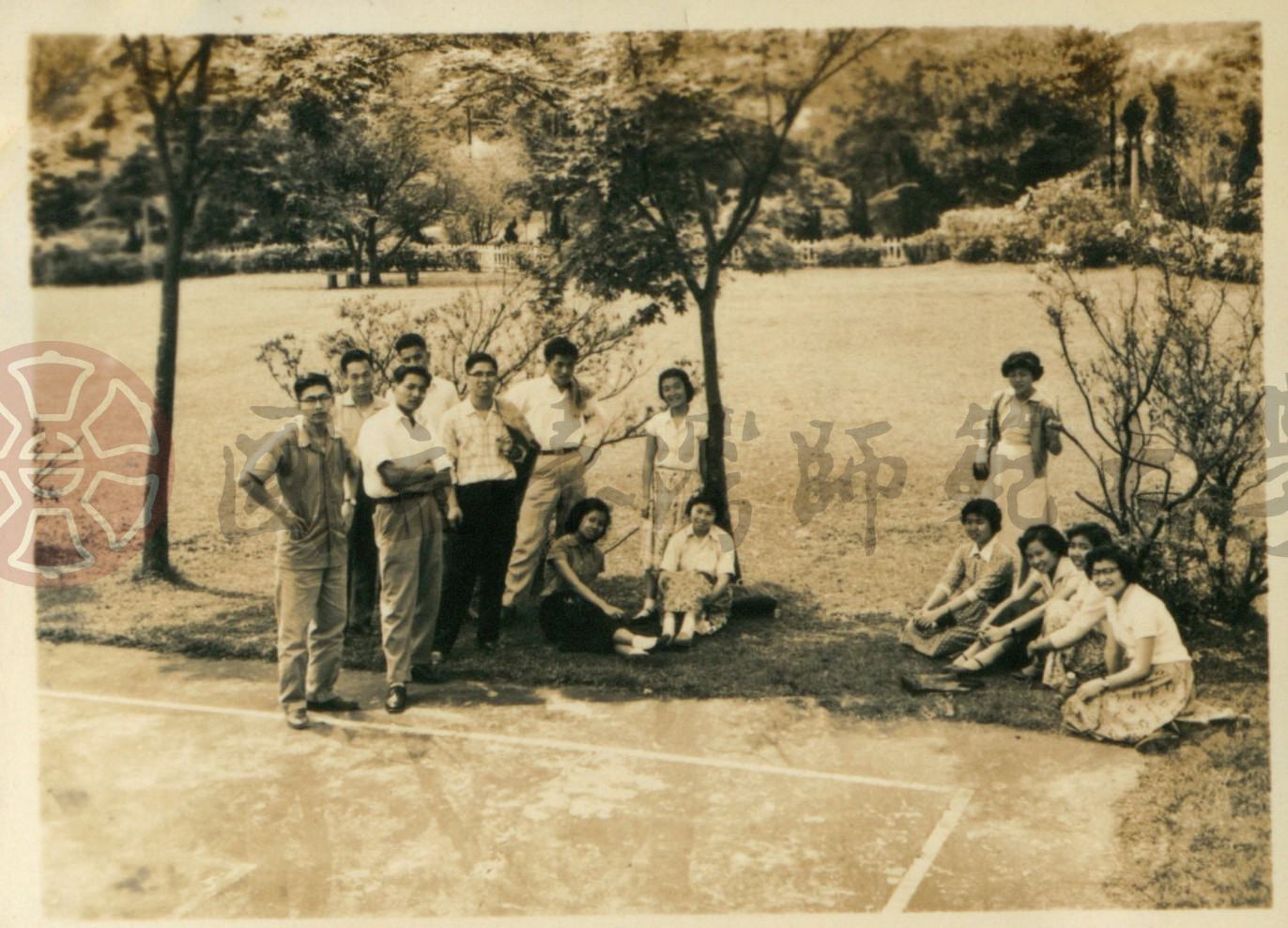
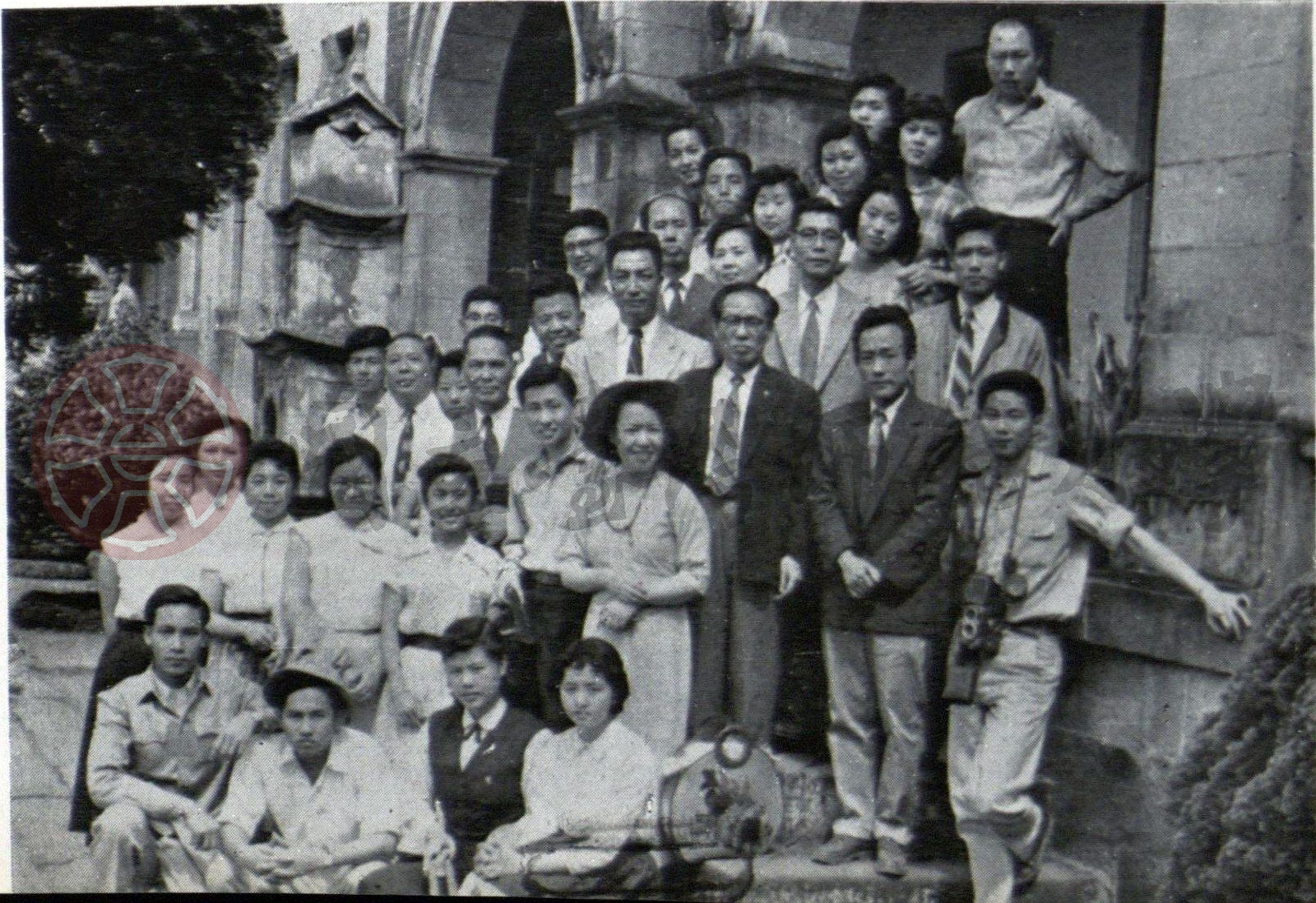
Taiwan Provincial Teachers College required students of its undergraduate programs and specialized training courses to engage in social services or community work during summer or winter vacations, such as social education, compulsory education, the New Life Movement, or internships at farms and factories. Students had to complete at least eight weeks of service in total, and those without a service certificate were not allowed to graduate.
In addition to setting up a service station in Magong to write letters, mend clothes, answer questions, make broadcasts, and publish bulletins for soldiers stationed there, the Teachers College team also provided services at Yuweng Island, Houjing, and Wangan. The service period on Yuweng Island was the longest, lasting a total of four days, while service in the other locations lasted only one day each. Whenever they arrived at a place, they divided themselves into four groups and served in different companies. They made full use of their skills in art, music, and physical education to serve their fellow soldiers. They taught the soldiers to sing songs, from anti-communist songs to Taiwanese folk songs. They taught them to dance, drew their portraits, played ball with them, and collected their writings and art. Every interaction demonstrated harmony and cooperation.——Ye Yu-Kang (Class of 1954, Department of Art). “Taiwan Provincial Teachers College Service Team in Penghu,” Mandarin Daily News. August 12, 1951.
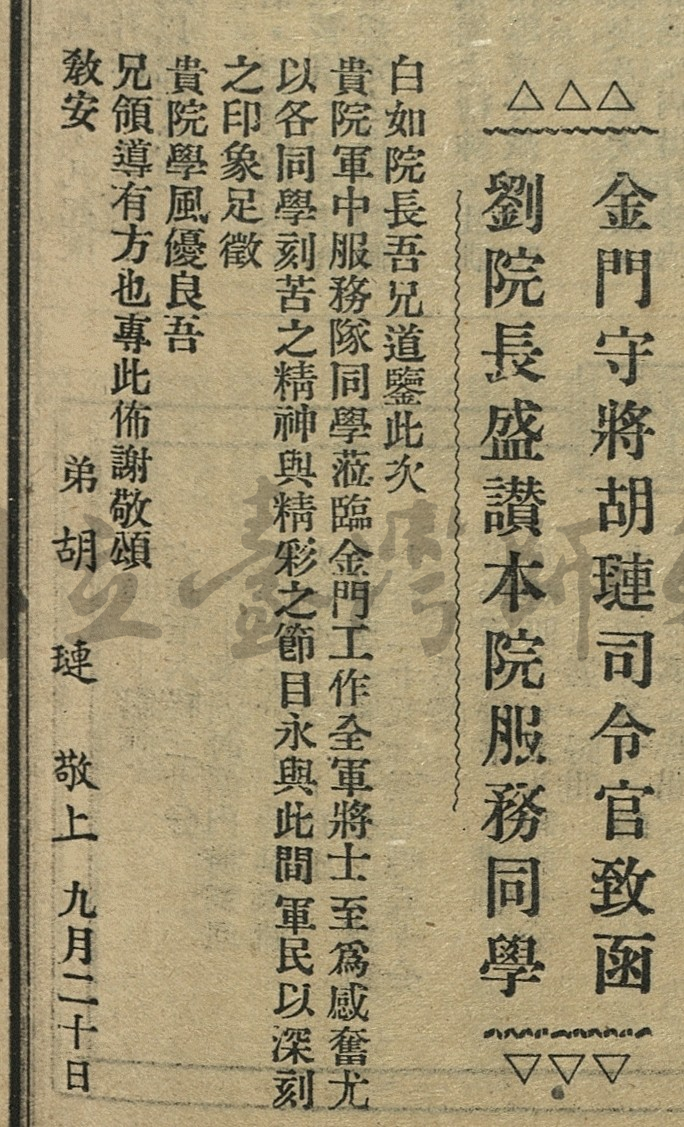
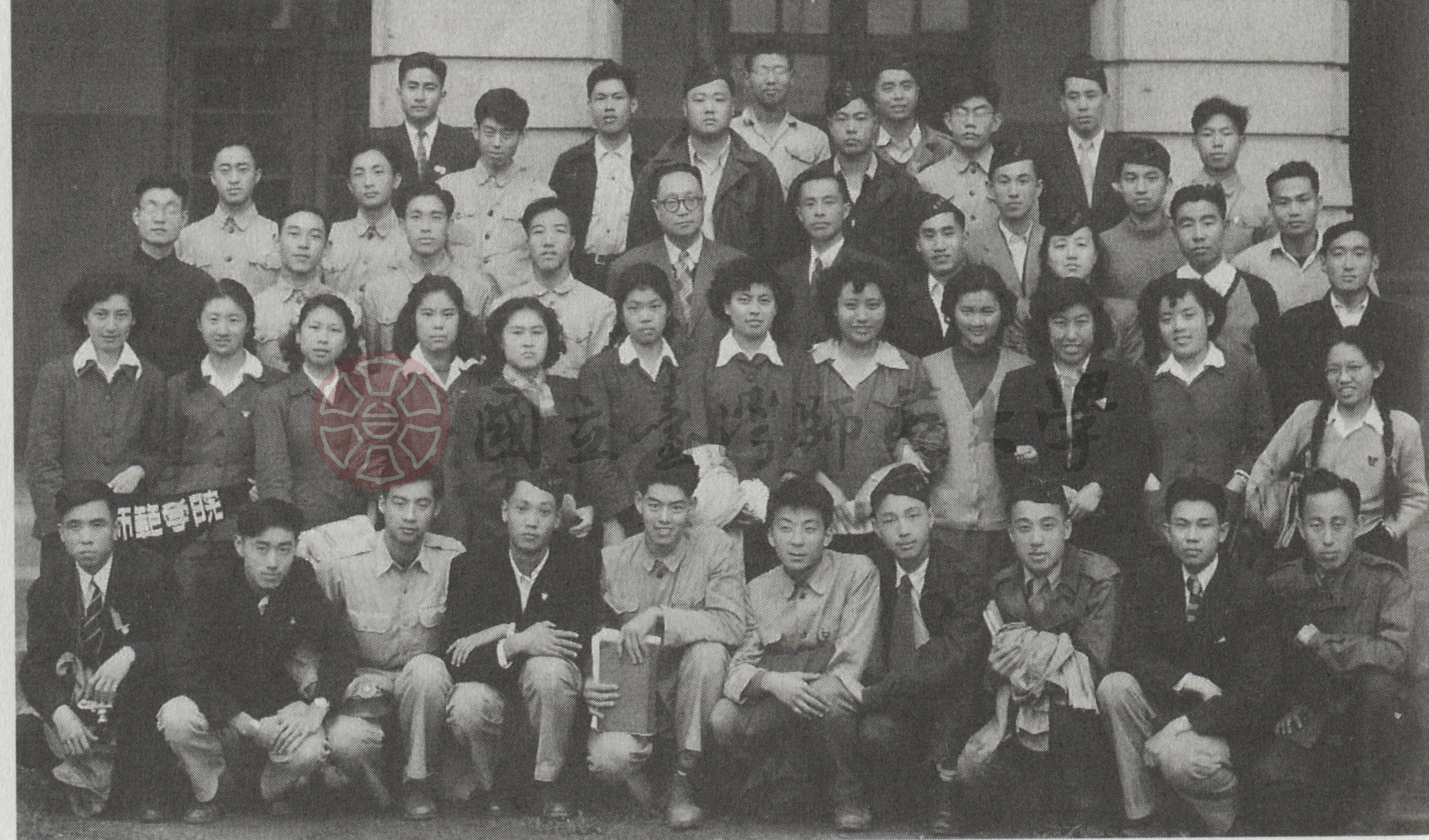
Per the Teachers College Student Internship Regulations promulgated by the Ministry of Education, Taiwan Provincial Teachers College formulated a complete internship guidance plan every semester based on the actual needs of each department. The plan includes visits, observations, teaching internships, and administrative internships. Visits were divided into two types—local and out-of-town. Local visits were led by teachers and included trips to primary and secondary schools as well as educational administrative agencies in the city. After each trip, a review meeting was held for students to share their thoughts. Out-of-town visits lasted for two weeks, following routes either around or halfway around the island, and included trips to colleges and universities, secondary schools, elementary schools, educational administrative agencies, social education institutions, factories, and historical sites, to broaden the students’ horizons. The itineraries were planned jointly by teachers and students from each class. Teaching internships were divided into two modes: on-campus trial teaching and on-site trial teaching at the affiliated high school. Observations and administrative internships were primarily arranged at the Provincial Department of Education or the affiliated high school.
Towards the end, I would like to make a few comments. 1. The affiliated high school lacks wall charts and specimens, which should be provided; ideally, a specimen room and laboratory should also be added. 2. The campus should plant more trees, flowers, and plants to use as local teaching materials. 3. Some of the original teachers at the affiliated high school are overly modest and unwilling to give honest criticism and feedback to student teachers, which is actually unnecessary. 4. When the weather is hot, student teachers often feel thirsty upon arriving from a long commute or after finishing a lesson. In the future, please prepare tea and refreshments for them. 5. The trial teaching hours are too short; it would be better to increase them in the future. 6. Most teachers and students believe that students of the affiliated high school lack manners and respect for teachers, which can be demoralizing for us.──“Experiences in Trial Teaching (Natural History),” Taiwan Provincial Teachers College Journal, Issue 2 of the resumed publication. June 5, 1949.
The day has finally come. I stepped onto the podium, remembering what Professor Hsieh often said: “A teacher must have the courage and strength of spirit of a general leading his soldiers into battle.” At the back of the classroom was the class’s original teacher Mr. Huang, the internship supervisor Mr. Peng, and fellow student Kao from my internship group. Facing them and the crowd of students, it felt like I was on a battlefield, and I couldn’t help but feel a little nervous.──“The First Lesson of Internship (English),” Taiwan Provincial Teachers College Journal, Issue 3 of the resumed publication. September 11, 1949.
The next day, I stayed in the student dormitory of Hualien Teachers College. Everyone hoped for a good night’s sleep to recover from the fatigue of the past two days. After some chattering, we all fell into a deep sleep. It seemed like I had only just fallen asleep when I was awakened by someone shouting, “Get up!” When I opened my eyes, I saw a policeman in a neat uniform! Everyone was disgusted at first. “Why would the police come into the women’s dormitory?” a classmate asked angrily, only to be told, “You’re coming with me to the police station!” “What crimes have we committed?” “You didn’t report your temporary residency status.” “We’re on our graduation trip; we’ll be on the move the whole time!”... At the end of our time there, when Professor Tsung (Tsung Liang-Tung) thanked our hosts, he also explained that we were exhausted because we were “detained at your county police station all night.”──Chia Fu-Ming (Class of 1957, Graduate Institute of Education). “Midnight Prisoner at Hualien Police Station,” NTNU Alumni Monthly, Issue 197, p. 11. June 5, 1981.
Finally, let’s talk about the year of our graduation trip. I remember it was in the early spring of 1950. Back then, railway transportation still maintained the train speeds of the Japanese colonial era. My classmates and I, of course, took the regular slow trains. Our department was led by Professors Wang Yu-Kang and Chu Shih-Min as we traveled from Taipei to Kaohsiung—a trip that took over 12 hours. We passed through Taichung, Tainan, Kaohsiung, and Pingtung. During the day, we visited provincial and municipal high schools to observe teaching, as well as chemical factories related to our field. At night, we stayed in the assembly halls of teachers colleges or high schools in each city or county, pushing chairs together to use as beds. Meals consisted of mess-style food. Thankfully, it was early spring, so there weren’t many mosquitoes. What we experienced was very much unlike the graduation trips of today’s NTNU students, who travel by luxurious tour buses and stay in city hotels. I suppose they can hardly imagine how the same kind of trip can offer such drastically different experiences thirty years apart—it’s truly night and day!——Lin Shan-Chi (Class of 1950, Department of Physics and Chemistry). “This Feeling Can Be Turned into Memory,” NTNU Alumni Monthly, Issue 189, p. 12. January 20, 1980.
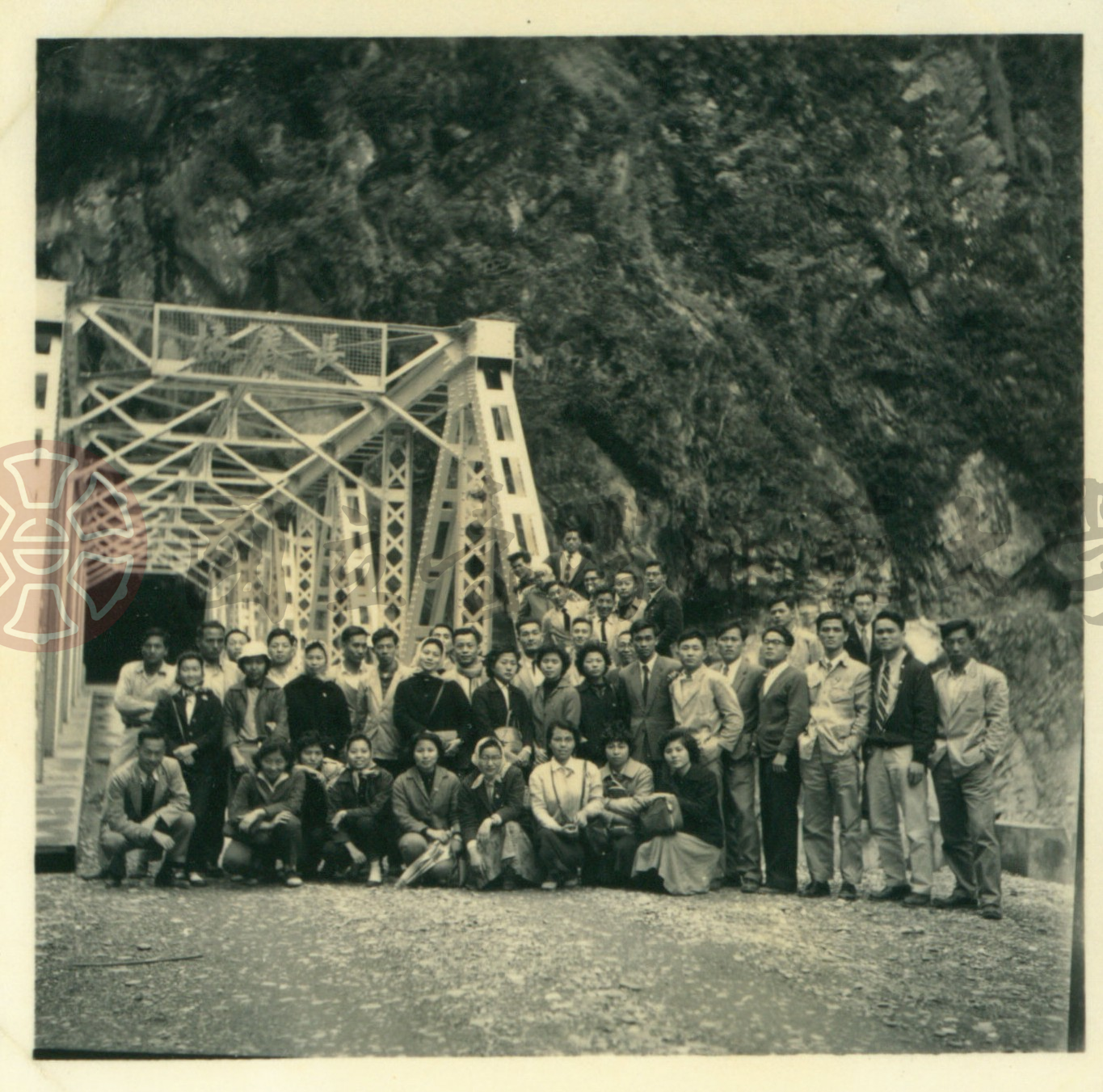
Starting in 1952, in response to the international situation and strategic needs of the time, the government of the Republic of China began broadly recruiting recent college graduates to receive military training and become reserve officers. This was known as the Old System of Reserve Officer Training for College Graduates. Instead of requiring a selective examination, anyone with the academic qualifications could be directly commissioned as officers. This continued until 1969, when it was replaced by the New System of Reserve Officer Training for College Graduates, which implemented a voluntary and selective process based on military needs.
Students of Taiwan Provincial Teachers College held a farewell banquet the day before yesterday, and a farewell evening gathering last night, screening movies about Army, Navy, and Air Force. A simple farewell ceremony was held at the front entrance square at six o’clock this morning. It was a lively affair with flowers and speeches. Dean Liu Chen encouraged everyone to study hard, catch up from behind, and bring the school spirit of “fairness, integrity, sincerity, and simplicity” to the army to truly achieve a “unity of scholarship and military service.”——Ye Yu-Kang (Class of 1954, Department of Art). “Seeing off the ‘Heroes’ at the Station: A Record of the Grand Farewell for College Student Military Trainees,” Mandarin Daily News. August 20, 1952.